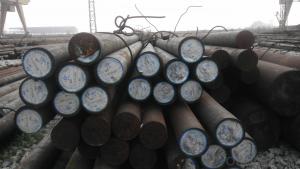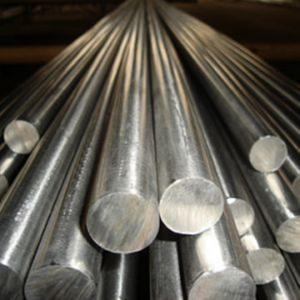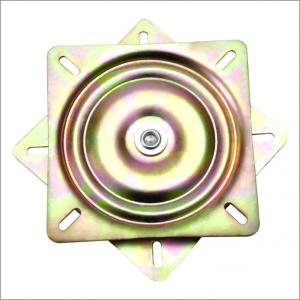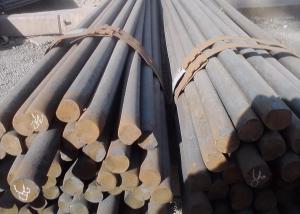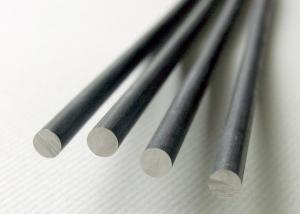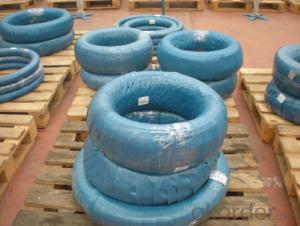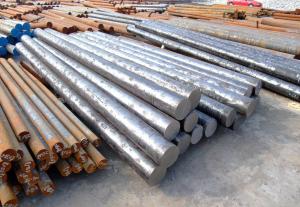Alloy Steel 6542 High Speed Tool Steel Special Steel
- Loading Port:
- China main port
- Payment Terms:
- TT OR LC
- Min Order Qty:
- 30 m.t.
- Supply Capability:
- 10000 m.t./month
OKorder Service Pledge
OKorder Financial Service
You Might Also Like
Item specifice
Chemical Composition(GB)%
| Standard | C | Si | Mn | P | S | Cr | W | Mo | V |
| W6Mo5Cr4V2 | 0.55-0.65 | ≤0.40 | ≤0.60 | ≤0.030 | ≤0.020 | 3.70-4.30 | 6.00-7.00 | 4.50-5.50 | 1.70-1.10 |
| M2 | 0.78-0.88 | 0.20-0.45 | 0.15-0.40 | ≤0.030 | ≤0.030 | 3.75-4.50 | 5.50-6.75 | 4.50-5.50 | 1.75-2.20 |
Heat Treatment
| Item | Temperature℃ | Hardness |
| Anneal | 840-860 | ≤255HB |
| Quenching | 1150-1180 | ≥60HRC |
| Tempering | 560-580 | ≥60HRC |
Applications:Used for various tools,large thermoplastic forming cutting tools,abrasion resistance components operating under high load such as cold extrusion dies
Main Product
Plastic Mould Steel
DIN 1.2311,1.2738,1.2083,1.2316 etc.
AISI P20,P20+Ni,420 etc.
JIS SUS420J2
Hot Work Steel
DIN 1.2344,1.2343,1.2367,1.2365,1.2581,1.2713 etc.
AISI H13,H11,H10,H21, etc.
JIS SKD61,SKD6,SKD5,SKT4 etc.
Cold Work Steel
DIN 1.2739, 1.2601, 1.2080, 1.2436, 1.2631, 1.263, 1.2510, 1.2327 etc.
AISI D2, D5, D3, D6, A8, A2, O1 etc.
JIS SKD10, SKD11, SKD1, SKS3 etc.
High Speed Steel
DIN 1.3343, 1.3243, 1.3247, 1.3355 etc.
AISI M2, M35, M42, T1 etc.
JIS SKH51, SKH35, SKH59, SKH2 etc.
Alloy Structural Steel
DIN 1.7035,1.6511,1.7220,1.7225 etc.
AISI 5140, 4340, 4135, 4140 etc.
JIS SCr440,SNCM439,SCM435,SCM440 etc.
Stainless & Carbon Steel or Others
DIN 1.4125,1.1191 etc
AISI 440C,1045, 1020 etc.
JIS SUS440C,S45C etc
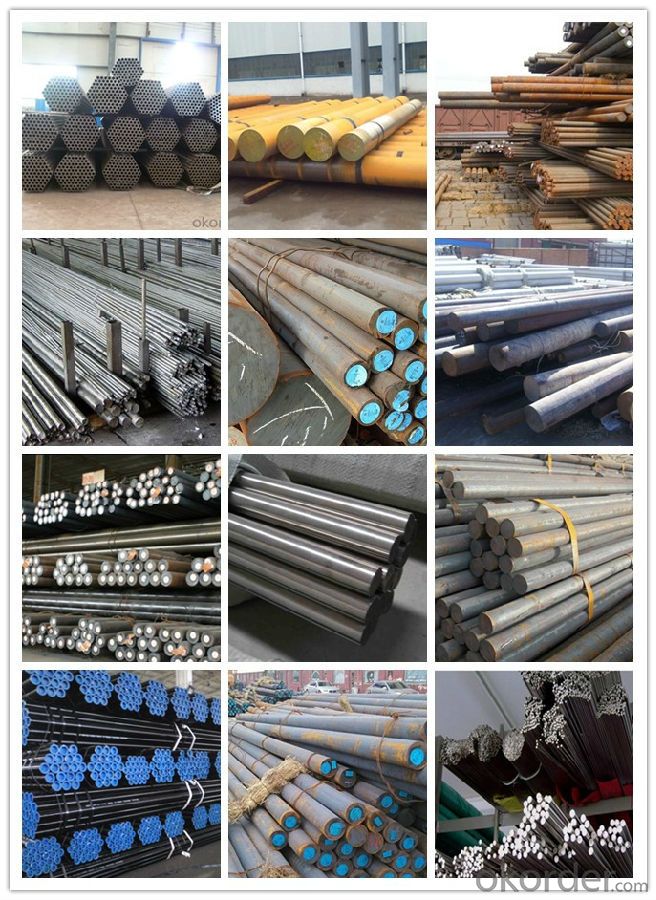 Product show
Product show
Workshop show
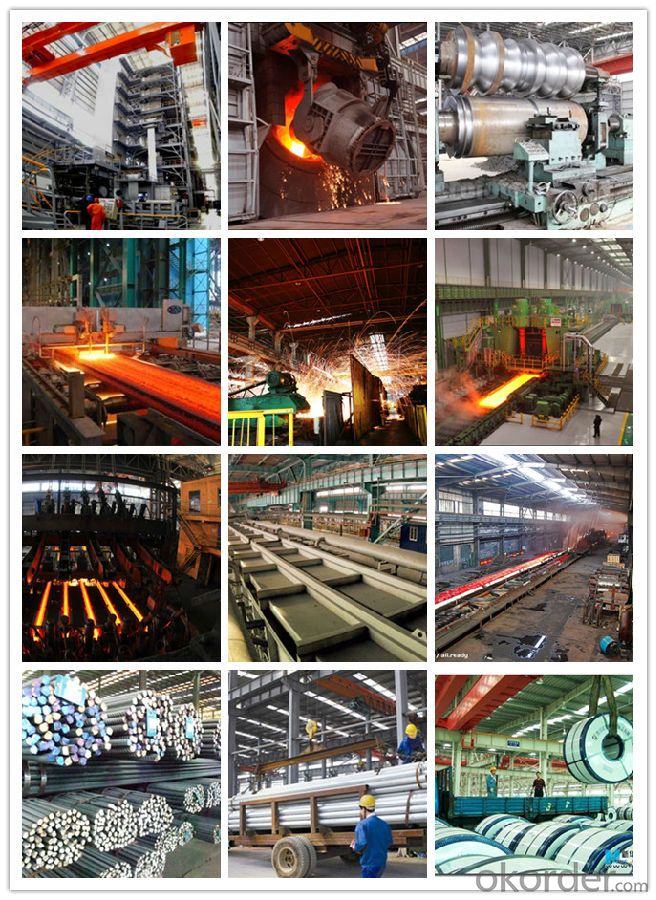
Shipping
1. FedEx/DHL/UPS/TNT for samples, Door-to-Door;
2. By Air or by Sea for batch goods, for FCL; Airport/ Port receiving;
3. Customers specifying freight forwarders or negotiable shipping methods!
Delivery Time: 3-7 days for samples; 5-25 days for batch goods.
Payment Terms
1.Payment: T/T, L/C, Western Union, MoneyGram,PayPal; 30% deposits; 70% balance before delivery.
2.MOQ: 1pcs
3.Warranty : 3 years
4.Package Informations: 1) EXPORT, In 20 feet (GW 25 ton) or 40 feet Container (GW 25 ton)
2)as customer's requirement
Why choose us?
(1) The leading exporter in China special steel industry.
(2) Large stocks for various sizes, fast delivery date.
(3) Good business relationship with China famous factories.
(4) More than 7 years steel exporting experience.
(5) Good after-sales service guarantee.
- Q:Can special steel be used for making nuclear industry components?
- Yes, special steel can be used for making nuclear industry components. Special steel, also known as alloy steel, possesses certain properties that make it suitable for use in the nuclear industry. These properties include high strength, excellent corrosion resistance, and good resistance to high temperatures and radiation. Nuclear industry components, such as reactor pressure vessels, steam generators, and fuel rods, operate under extreme conditions of high pressure, high temperature, and exposure to radiation. Special steel can withstand these conditions and maintain its structural integrity, ensuring the safe and reliable operation of nuclear facilities. The use of special steel in the nuclear industry also helps to prevent the release of radioactive materials. The high corrosion resistance of special steel reduces the risk of leakage and contamination, thereby enhancing the safety of nuclear power plants. Furthermore, special steel can be tailored to meet specific requirements of the nuclear industry. Different types of special steel alloys can be developed with specific compositions and heat treatments to optimize their properties for nuclear applications. This allows for the customization of steel components to meet the unique demands of the nuclear industry. In conclusion, special steel can indeed be used for making nuclear industry components due to its high strength, corrosion resistance, and resistance to high temperatures and radiation. Its use contributes to the safety and reliability of nuclear facilities, while also allowing for customization to meet specific requirements.
- Q:How does special steel contribute to the aerospace material recyclability?
- Special steel contributes to the aerospace material recyclability by offering high durability and strength, making it a preferred material for various aircraft components. Its recyclability is enhanced through processes such as melting and reformation, allowing the steel to be reused in new applications. This reduces the need for new steel production, conserves resources, and minimizes waste generation in the aerospace industry.
- Q:What is the role of research and development in advancing special steel technology?
- Research and development (R&D) plays a crucial role in advancing special steel technology. Special steel refers to steel alloys that are specifically designed to possess enhanced properties such as high strength, corrosion resistance, heat resistance, or electrical conductivity. R&D activities are essential for pushing the boundaries of special steel technology and developing new and improved alloys. Through continuous research, scientists and engineers are able to explore new compositions, manufacturing processes, and heat treatment techniques to enhance the properties and performance of special steels. One of the primary roles of R&D in advancing special steel technology is the discovery and development of new alloy compositions. R&D teams analyze the properties of different elements and their interactions to design steel alloys with desired characteristics. This involves conducting experiments, testing various compositions, and optimizing the alloy to meet specific application requirements. By fine-tuning the composition, R&D helps in enhancing the strength, hardness, toughness, or other desirable properties of special steels. Furthermore, R&D also focuses on developing innovative manufacturing processes for special steel production. These processes involve advanced techniques such as vacuum melting, rapid solidification, or powder metallurgy to obtain a refined microstructure and improved mechanical properties. R&D teams work on optimizing these processes to enhance the overall quality, efficiency, and cost-effectiveness of special steel production. Another crucial role of R&D is the improvement of heat treatment techniques for special steels. Heat treatment is a critical step in the fabrication of special steels as it helps to achieve desired microstructures and properties. R&D endeavors to optimize the heat treatment parameters, such as temperature, time, and cooling rates, to enhance the mechanical properties and performance of special steels. In addition to alloy composition, manufacturing processes, and heat treatment, R&D also plays a vital role in developing new testing and characterization methods for special steels. This enables the evaluation and validation of the properties and performance of these steels under various conditions. Advanced testing techniques such as electron microscopy, X-ray diffraction, and mechanical testing are employed to assess the microstructural features, phase transformations, and mechanical behavior of special steels. Overall, research and development activities are indispensable for advancing special steel technology. Through continuous research, innovation, and optimization, R&D teams contribute to the development of new and improved alloys, manufacturing processes, heat treatment techniques, and testing methods, ultimately leading to the advancement of special steel technology and its applications in various industries such as automotive, aerospace, energy, and construction.
- Q:What are the different methods of preventing galvanic corrosion in special steel?
- There are several methods available to prevent galvanic corrosion in special steel: 1. Coating: Applying a protective coating to the surface of the steel can prevent direct contact between the steel and the corrosive environment. This can be done using various types of coatings such as paints, epoxy, or polyurethane. The coating acts as a barrier and prevents the formation of galvanic cells. 2. Cathodic protection: This method involves making the steel the cathode in a galvanic cell, which prevents corrosion. This can be achieved through two techniques: sacrificial anode cathodic protection and impressed current cathodic protection. Sacrificial anode cathodic protection involves connecting a more reactive metal, such as zinc or magnesium, to the steel. The sacrificial anode corrodes instead of the steel, protecting it. Impressed current cathodic protection involves applying a low-level direct current to the steel, which prevents the formation of galvanic cells. 3. Isolation: By physically separating the special steel from other metals that are more reactive, galvanic corrosion can be prevented. This can be done by using insulating materials, such as plastic or rubber, between the steel and other metals. 4. Alloying: The addition of certain alloying elements to the special steel can improve its resistance to galvanic corrosion. For example, adding chromium to steel forms a passive oxide layer on the surface, which acts as a barrier against corrosion. 5. Design considerations: Proper design and engineering can also help prevent galvanic corrosion. For example, avoiding the use of dissimilar metals in close proximity can minimize the potential for galvanic corrosion. Additionally, designing structures to allow for proper drainage and ventilation can prevent the accumulation of moisture, which can accelerate galvanic corrosion. It is important to note that the selection of the most appropriate method for preventing galvanic corrosion in special steel depends on various factors such as the specific environment, cost considerations, and the desired lifespan of the steel.
- Q:How does special steel contribute to the defense machinery industry?
- Special steel contributes to the defense machinery industry by providing superior strength, durability, and resistance to corrosion. This type of steel is specifically designed to meet the demanding requirements of military applications, ensuring that defense machinery can withstand harsh environments, extreme temperatures, and heavy use. By utilizing special steel, the defense industry can produce high-performance weapons, vehicles, and equipment that are essential for national security and defense capabilities.
- Q:How does special steel ensure product traceability?
- Special steel ensures product traceability through the implementation of unique identification codes, comprehensive record-keeping systems, and advanced tracking technologies. These measures enable manufacturers to accurately track and trace the entire lifecycle of the steel, from raw materials to the finished product. This ensures that any issues or defects can be identified and addressed promptly, enhancing quality control and customer satisfaction.
- Q:How does tool steel maintain its hardness at high temperatures?
- Tool steel maintains its hardness at high temperatures due to its high carbon content and alloying elements. The high carbon content allows for the formation of carbides, which are extremely hard and stable even at elevated temperatures. Additionally, the alloying elements in tool steel, such as chromium, tungsten, and molybdenum, form secondary carbides that further enhance the steel's hardness and heat resistance. These carbides act as strengthening agents, preventing the steel from losing its hardness and maintaining its performance even under high-temperature conditions.
- Q:How does electrical steel minimize energy losses in electrical devices?
- Electrical steel minimizes energy losses in electrical devices through its unique magnetic properties and composition. It is specifically designed to have low electrical conductivity and high magnetic permeability, which reduces eddy current losses and hysteresis losses. These losses occur due to the alternating magnetic fields generated in electrical devices, such as transformers and motors. By using electrical steel, these losses are minimized, resulting in more efficient energy transfer and reduced energy wastage.
- Q:What are the requirements for special steel used in aircraft manufacturing?
- The requirements for special steel used in aircraft manufacturing are quite stringent due to the critical nature of the components and the demanding operating conditions in which they are subjected. Here are some key requirements: 1. High strength: Special steel used in aircraft manufacturing must possess exceptional strength to withstand the extreme forces and loads experienced during flight. This ensures the structural integrity and safety of the aircraft. 2. Lightweight: While strength is crucial, special steel for aircraft must also be lightweight to minimize the overall weight of the aircraft. This helps enhance fuel efficiency and allows for increased payload capacity. 3. Corrosion resistance: The steel must exhibit excellent resistance to corrosion, as aircraft are often exposed to harsh environments, including high humidity, saltwater, and various chemicals. Corrosion resistance helps maintain the structural integrity and prolong the lifespan of the aircraft. 4. Fatigue resistance: Special steel must have high fatigue resistance to withstand repetitive loading and unloading cycles that occur during flight. This ensures that the components do not fail prematurely due to cyclic stress. 5. Heat resistance: The steel should be able to withstand high temperatures generated by the engines, as well as the heat generated during high-speed flight. Heat resistance prevents deformation, melting, or loss of strength under extreme thermal conditions. 6. Weldability: Special steel used in aircraft manufacturing should possess good weldability, allowing for efficient and reliable joining of components during the manufacturing process. This ensures strong and secure connections between various parts of the aircraft. 7. Non-magnetic properties: In certain applications, such as electronic systems, it is essential for the steel to be non-magnetic to prevent interference with sensitive equipment. 8. Traceability and certification: The steel must have proper traceability and certification to meet industry standards and regulatory requirements. This includes documentation of the steel's composition, manufacturing process, and testing procedures to ensure consistent quality and performance. Meeting these requirements is essential to ensure the safety, reliability, and efficiency of aircraft. Special steel used in aircraft manufacturing undergoes rigorous testing, quality control, and certification processes to ensure it meets these stringent requirements before being used in the construction of aircraft components.
- Q:How does special steel contribute to reducing product downtime due to repairs?
- Special steel contributes to reducing product downtime due to repairs by offering superior strength, durability, and corrosion resistance. This type of steel is specifically designed to withstand harsh operating conditions and extreme temperatures, reducing the likelihood of breakdowns or failures. Its exceptional properties allow for longer periods between maintenance and repairs, ensuring that the product remains operational for extended periods. Additionally, special steel often enables faster and more efficient repairs, as it can be easily welded, machined, or replaced, minimizing the time required for downtime and maximizing productivity.
1. Manufacturer Overview |
|
|---|---|
| Location | |
| Year Established | |
| Annual Output Value | |
| Main Markets | |
| Company Certifications | |
2. Manufacturer Certificates |
|
|---|---|
| a) Certification Name | |
| Range | |
| Reference | |
| Validity Period | |
3. Manufacturer Capability |
|
|---|---|
| a)Trade Capacity | |
| Nearest Port | |
| Export Percentage | |
| No.of Employees in Trade Department | |
| Language Spoken: | |
| b)Factory Information | |
| Factory Size: | |
| No. of Production Lines | |
| Contract Manufacturing | |
| Product Price Range | |
Send your message to us
Alloy Steel 6542 High Speed Tool Steel Special Steel
- Loading Port:
- China main port
- Payment Terms:
- TT OR LC
- Min Order Qty:
- 30 m.t.
- Supply Capability:
- 10000 m.t./month
OKorder Service Pledge
OKorder Financial Service
Similar products
New products
Hot products
Related keywords
